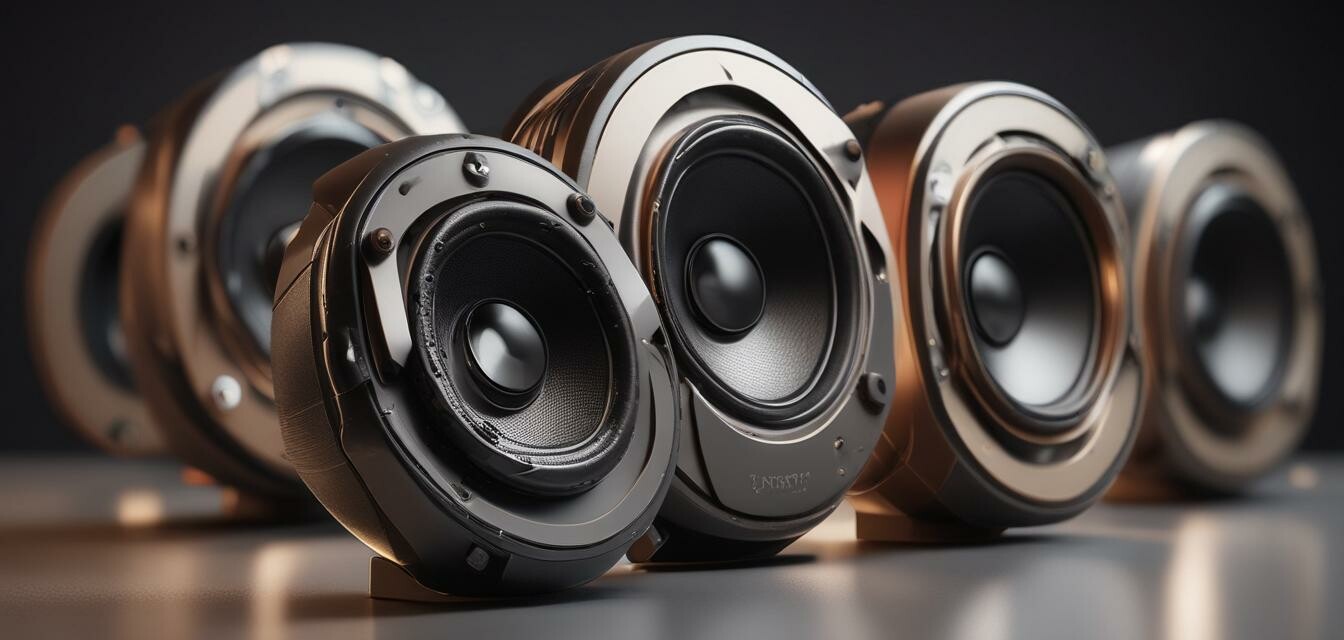
Trends in Acoustic Engineering for 2025
Key Takeaways
- Emergence of smart speakers with advanced acoustic algorithms.
- Increased focus on sustainability and eco-friendly materials.
- Integration of immersive sound technologies in consumer products.
- Adoption of artificial intelligence for personalized audio experiences.
- Trends in miniaturization without compromising sound quality.
As we approach 2025, the field of acoustic engineering is witnessing a transformative wave of advancements that are redefining sound experiences in consumer audio products. This article delves into current trends shaping the industry and offers insights into future innovations, from smart systems to eco-friendly materials.
The rise of smart speakers
Smart speakers have rapidly evolved into essential components of modern audio experiences. As technology advances, these devices are incorporating sophisticated acoustic algorithms. These algorithms enhance sound quality by adapting to the environment and understanding user preferences. This personalization creates a richer audio experience.
Key features of smart speakers
- Voice recognition technology
- Adaptive sound algorithms
- Multi-room audio capabilities
- Smart home integration
Sustainability in acoustic engineering
Another significant trend is the increasing emphasis on sustainability within the acoustic engineering field. Manufacturers are shifting towards using eco-friendly materials and production processes. This not only aligns with consumer consciousness regarding environmental issues but also sets a new standard in product development.
Examples of sustainable practices
| Practice | Description |
|---|---|
| Recycled materials | Using plastics and metals sourced from recycling programs. |
| Energy-efficient production | Employing manufacturing processes that require less energy. |
| Biodegradable components | Integrating materials that decompose naturally after disposal. |
Immersive sound technologies
Consumers are increasingly seeking immersive audio experiences, prompting manufacturers to integrate advanced sound technologies. Surround sound and 3D audio capabilities are becoming standard in modern speakers, enhancing viewing and listening experiences across media formats.
Types of immersive sound technology
- Dolby Atmos - Provides a three-dimensional sound experience.
- DTS:X - Offers customizable sound placement around users.
- Ambisonics - Captures and reproduces sound from all directions.
Artificial intelligence in audio
The integration of artificial intelligence in consumer audio products is also on the rise. AI is being used to analyze sound preferences, optimize audio output, and even create personalized playlists. This leads to a tailored listening experience that adapts to individual user behaviors and preferences.
Miniaturization of audio technology
Another exciting trend is the miniaturization of audio technologies without compromising sound quality. Compact speakers are increasingly incorporating advanced acoustic engineering principles to deliver clear, powerful sound in smaller packages. This is particularly significant for portable and outdoor speakers.
Pros
- Enhanced sound quality in compact designs.
- Portability and ease of use.
- Integration of innovative technologies.
- Eco-friendly options available.
Cons
- Cost of high-quality materials may rise.
- Complexity in user interfaces as features increase.
- Potential for rapid obsolescence due to fast-paced tech evolution.
Conclusion
The world of acoustic engineering is rapidly evolving, driven by technological advancements and consumer demands. As we look towards 2025, the focus on smart technology, sustainability, and the integration of immersive sound experiences are set to shape the future of audio products. For the latest developments in this dynamic industry, make sure to check our [News and Trends category](/blog/news-and-trends) regularly.
Further reading
- Explore Bluetooth Speakers for an immersive sound experience.
- Discover Home Theater Systems that elevate your movie nights.
- Check our Buying Guides for the best audio equipment.